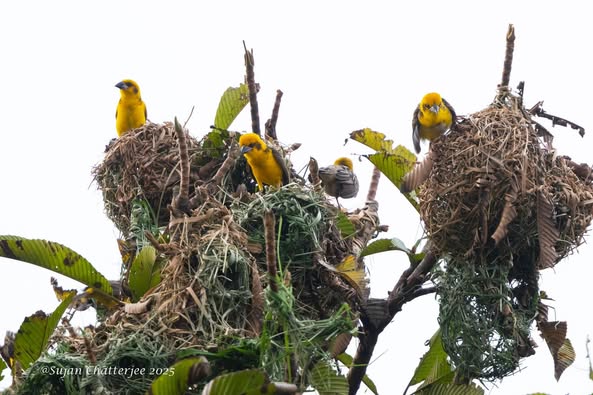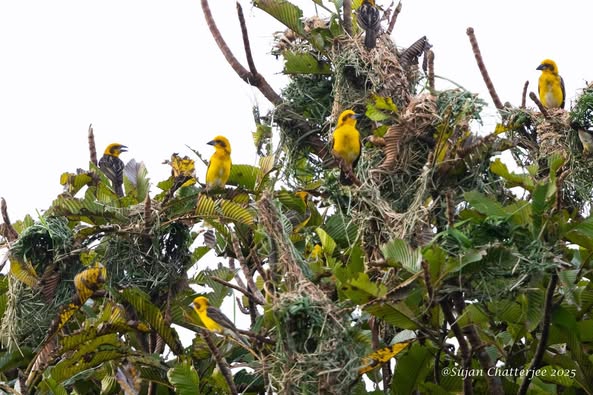Guwahati, July 14: In a groundbreaking conservation milestone, Kaziranga National Park and Tiger Reserve has officially released its First Grassland Bird Survey Report, documenting 43 species and revealing the highest known grassland bird diversity in India.
The extensive survey, conducted between March 18 and May 25 across the Eastern Assam, Biswanath, and Nagaon Wildlife Divisions, recorded one Critically Endangered, two Endangered, and six Vulnerable species, including several endemic to the Brahmaputra floodplains. The findings elevate Kaziranga’s role as a vital refuge for grassland-dependent bird species within the Indo-Burma biodiversity hotspot.

One of the most remarkable discoveries was the successful breeding of the endangered Finn’s Weaver (Ploceus megarhynchus)—locally known as tukura chorai (তুকুৰা চৰাই)—within the park. “Delighted to share that the endangered Finn’s Weaver is successfully breeding in Kaziranga,” Assam’s Environment and Forest Minister Chandra Mohan Patowary posted on social media. “This remarkable bird, a LIFER for birdwatchers and a master nest-builder atop trees is a vital indicator of grassland health. A proud moment for conservation and habitat management.”
The survey emphasized ten focal species that are globally threatened or endemic to the floodplain grasslands: Bengal Florican, Swamp Francolin, Finn’s Weaver, Swamp Grass Babbler, Jerdon’s Babbler, Slender-billed Babbler, Black-breasted Parrotbill, Marsh Babbler, Bristled Grassbird, and Indian Grassbird. These birds serve as bioindicators of the ecological health of floodplain grasslands.

The study also marked a technological leap in avian monitoring with the deployment of passive acoustic recorders, allowing round-the-clock, non-intrusive monitoring even in remote or high-risk zones. This innovation significantly improved the detection of cryptic and shy species, boosting the accuracy of the data collected.
A key highlight was the identification of critical grassland habitats within Kaziranga, including the Kohora Range, where the breeding colony of the endangered Finn’s Weaver was found. The discovery underscores the urgent need for targeted habitat protection and management practices in these fragile ecosystems.
The report was unveiled on July 11 at Kaziranga by Minister Patowary, who praised the park authorities for documenting lesser-known biodiversity and integrating science into protected area management. “This initiative shines a spotlight on an often-overlooked part of Kaziranga’s wildlife and opens up a new frontier in conservation,” he said.

The survey was the result of a coordinated effort involving forest officials, scientists, and birding experts. Leading the charge were noted ornithologists and conservationists including Dr. Asad R. Rahmani, Dr. Anwar Uddin Choudhury, Dr. Udayan Borthakur, Dr. Sonali Ghosh, Chiranjib Bora, and many others who contributed field expertise and scientific insight.
The report not only reinforces Kaziranga’s global ecological importance but also sets a new benchmark for grassland bird conservation across India. It calls for continued ecological monitoring and adaptive management, offering a model that can be replicated in other protected landscapes to safeguard vulnerable avian species.




